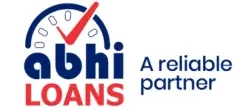Part Payment vs Prepayment vs Pre-Closure of loans
As you navigate the world of loans, you’ll encounter various strategies to manage and reduce your debt burden. Part payment, prepayment, and pre-closure are three distinct approaches that borrowers often consider to ease their financial obligations.
In this blog, we’ll unravel the differences between these options and help you understand the implications of each on your loan repayment journey.
Part Payment of Loans
The meaning of Part payment is paying off a portion of your outstanding loan balance before the loan term’s completion. This reduces the principal amount, subsequently lowering your Equated Monthly Installments (EMIs) and overall interest payments. Part payment offers a middle ground between continuing with regular EMIs and opting for full pre-closure.
Prepayment of Loans
Prepayment, on the other hand, entails clearing a substantial chunk of your loan before the original tenure ends. While this reduces the overall interest burden and shortens the loan tenure, it doesn’t necessarily bring the loan term to an immediate close.
The decision to prepay depends on the amount you’re able to allocate and your preference for achieving interest savings while maintaining some loan duration.
Pre-Closure of Loans
Pre-closure involves settling the entire loan amount before the original loan tenure concludes. This approach yields the most significant interest savings, as you’re effectively cutting short the interest accumulation period. However, some lenders may impose pre-closure penalties, which should be factored into your decision.
Key Differences and Considerations
The differences between part payment, prepayment, and pre-closure are subtle yet significant. Part payment and prepayment involve reducing the loan balance without immediately closing the loan, whereas pre-closure means complete loan settlement. Your choice should be influenced by factors, such as the type of loan, its terms, your financial goals, and potential tax implications.
When to Choose Each Option?
Part payment is suitable when you have a lump sum available and prefer to maintain the loan’s original term. Prepayment is ideal if you can spare a substantial amount to reduce interest costs but aren’t prepared to close the loan entirely. Pre-closure is the best option if your financial circumstances permit full settlement, leading to maximum interest savings.
Benefits and Potential Drawbacks
Reducing interest payments and loan tenure are the primary benefits of part payment, prepayment, and pre-closure. However, prepayment penalties or the loss of investment opportunities should be considered before making a decision.
Consider taking a loan against securities at Abhiloans as there are no pre closure, part payment or prepayment charges. Assessing these pros and cons is essential for a well-informed choice.
Making an Informed Decision
It’s crucial to seek advice from financial advisors or loan experts before committing to any repayment strategy. Evaluate your financial goals, current debts, and future plans to determine which option aligns with your objectives. A well-considered decision ensures you’re optimizing your loan repayment without adversely affecting your overall financial health.
Conclusion
Loan repayment isn’t a one-size-fits-all approach. Part payment, prepayment, and pre-closure offer tailored solutions for borrowers seeking to manage their debts efficiently. By understanding the differences, benefits, and potential drawbacks of each strategy, you’re equipped to make a decision that aligns with your financial goals and secures your journey towards financial freedom. Remember, a well-chosen repayment approach can significantly impact your long-term financial well-being.
Frequently Asked Questions
What is the main difference between part payment, prepayment, and pre-closure of loans?
Part payment involves paying off a portion of the outstanding loan balance, reducing EMIs and interest payments, without immediately closing the loan. Prepayment also involves reducing the loan balance but with the intention of achieving interest savings, without necessarily closing the loan. Pre-closure means settling the entire loan amount before the original loan tenure ends, resulting in maximum interest savings.
How does part payment affect my loan tenure and monthly payments?
Part payment reduces the principal amount, which in turn lowers your EMIs and shortens the loan tenure. However, it doesn’t necessarily lead to immediate loan closure.
What are the benefits of prepayment over part payment?
Prepayment generally leads to more substantial interest savings compared to part payment. It also has a stronger impact on shortening the loan tenure, making it a preferred option for borrowers seeking quicker debt reduction.
Are there any penalties associated with loan pre-closure?
Yes, some lenders may impose pre-closure penalties, especially if the loan is closed before a specified period. It’s crucial to check with your lender regarding any potential penalties before opting for pre-closure.
How can I decide which option to choose for loan repayment?
To decide between part payment, prepayment, and pre-closure, consider factors, such as the loan type, terms, your financial goals, and available funds. Consulting with financial advisors or loan experts can help you make an informed decision that aligns with your circumstances and objectives.

